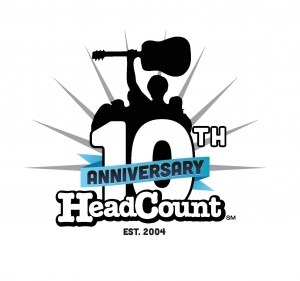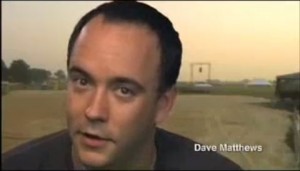This year marks HeadCount’s 10th Anniversary. To celebrate, we’ll be taking a look back at our history on a year-by-year basis, starting with 2004. We hope this series captures the enormous contribution made by artists, volunteers and supporters who got us to this milestone.
Like most great things, HeadCount started out as nothing more than an idea. Through sheer grit, determination and a little bit of luck, it quickly grew into a full-fledged movement with volunteer teams in over 70 cities across the country. All in less than 12 months.
Today, on the 10th anniversary of HeadCount’s official launch party, we’re taking a look back at the organization’s first year. To get to the start of that wild ride we’ll have to go back a bit further than that day exactly one decade ago, to the moment the light bulb went off in November of 2003.
“I was working as a sportswriter at the time and doing an interview, when the subject turned to the state of the world and how messed up it was,” notes HeadCount Executive Director Andy Bernstein. “I hung up the phone and said to myself ‘I've got to quit complaining and actually do something about it.’ Then it hit me. If I could just get people to vote who attended the same concerts I did, that's a difference I could personally make. I emailed Marc [Brownstein] with the idea and he got right back to me with two words: ‘I'm in.’ That was it. We decided right then and there to make it happen.”
Marc Brownstein had already achieved acclaim on the live music scene as bassist for the popular jam band The Disco Biscuits. His socially conscious attitude and industry connections made him the perfect partner for the kind of endeavor that Bernstein had envisioned. On top of that, Brownstein also has his own reasons for wanting to get involved.
Like many Americans at the time, he was watching events unfold with the Iraq War and in Washington, and feeling a calling. “It was frustrating, and not in a partisan way. It was frustrating as a human… I made the decision that I wanted to harness the energy that we had in the music scene and try to turn it into something new.”
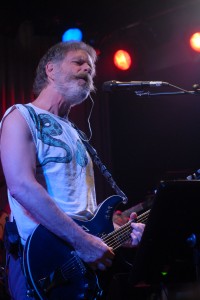 The pair hit the ground running that January, as they focused their energy on creating an official website and enlisting a top-notch Board of Directors. Brownstein’s friend Al Schnier of jam scene staples moe. was the next major player to take up the project. The guitarist was more than willing to use his connections to bring others into the fold, and he was instrumental in convincing Bob Weir to join him on the budding organization’s board. Then, Bernstein literally ran into Weir outside of a Manhattan office building where the legendary member of the Grateful Dead was doing a radio interview.
The pair hit the ground running that January, as they focused their energy on creating an official website and enlisting a top-notch Board of Directors. Brownstein’s friend Al Schnier of jam scene staples moe. was the next major player to take up the project. The guitarist was more than willing to use his connections to bring others into the fold, and he was instrumental in convincing Bob Weir to join him on the budding organization’s board. Then, Bernstein literally ran into Weir outside of a Manhattan office building where the legendary member of the Grateful Dead was doing a radio interview.
“There was a dude in NYC at the time who looked a lot like Bob Weir, and for a second I thought it was that guy. Then I looked closer and I was like ‘Whoa, that guy REALLY looks like Bob Weir.’ I realized it was him, introduced myself, and it felt like destiny. Bob gave me his cell number on the spot. At that moment, HeadCount’s most important relationship truly came together.”
Meanwhile, a team of volunteers had come together and was working long hours behind the scenes. The first big step was creating an online platform that would allow HeadCount to organize its teams and volunteers from around the country in a simple way. That task fell to Jay Carbon, a passionate young techie who answered HeadCount’s request for IT help on the live music fan forum PhantasyTour. Carbon dedicated his time and his skills to building a proprietary system that could track volunteers, concerts and voter registrations from start to finish--all free of charge. It was no small feat, but it was absolutely essential for HeadCount’s viability as a grassroots nonprofit with little money and no paid staff.
“I wasn’t necessarily a programmer, but I knew the language enough to get by and was willing to put in enough time that was needed to get it to work the way that me, Andy, and Marc wanted it to work,” explains Carbon.
“Without Jay, there wouldn't be a HeadCount,” adds Bernstein. “He built this system that is still the framework for what we do today. Jay was just an ordinary guy who loved the same music and had skills he could share. His contribution truly represents what made HeadCount happen — individuals giving the best of themselves in order to make a difference.”
Things continued to move quickly as HeadCount launched their new online platform and officially incorporated as a 501(c)(3) nonprofit. Then, on February 13, 2004, Brownstein, Schnier and their respective bandmates Aron Magner and Vinnie Amico teamed up for a “HeadCount Allstars” superjam at Cervantes in Denver. The show put HeadCount on the map, and fans began pledging their time and support for the cause in droves following a public call for volunteers.
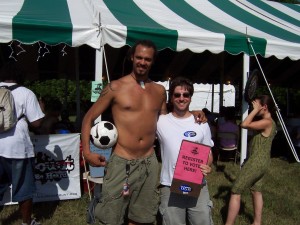
HeadCount finally started putting boots on the ground that spring, registering voters and spreading awareness at shows in over 30 cities. Volunteers set up tables at shows for various bands with ties to the jam scene, including moe.,The Disco Biscuits, Michael Franti & Spearhead, Bela Fleck, Leftover Salmon, The String Cheese Incident, Assembly of Dust, The Derek Trucks Band, Gov't Mule and Galactic. Thousands of voters were registered in those first two months, and the organization was ballooning faster than anyone had expected, which posed a serious challenge for the organization’s dedicated, but inexperienced, leaders.
“There were no salaries, there was no staff,” recalls Brownstein. “There was just myself and Andy running the organization day to day.”
“The passion was there in the beginning, but the organization definitely wasn’t,” remembers original Boston Team Leader Dan Conroe (pictured above, with Michael Franti). “We just kind of got thrown in there to set up tables at these shows and register people to vote. It was a little chaotic, but somehow it worked. It was a time when people were fired up, so we were getting a good response at the shows.”
Despite the challenges, HeadCount was making waves across the live music scene. By the time the summer rolled around, the organization had caught the eye of Dave Matthews Band, one of the most popular touring bands in the world. DMB awarded HeadCount a sizable grant and invited them to join the group on tour for what would end up being a very fruitful partnership. It didn’t stop there either, as The Dead and Phish both brought brought teams along for their summer tours as well.
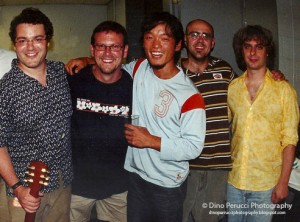 HeadCount also received boost in early June, when The Disco Biscuits got together with Mike Gordon of Phish, Joe Russo and Marco Benevento (GRaB, in their first-ever performance) for a benefit show at B.B. King in New York City. The String Cheese Incident’s Michael Kang and Assembly of Dust’s Reid Genauer were also at the party, which significantly increased the upstart nonprofit’s operating budget.
HeadCount also received boost in early June, when The Disco Biscuits got together with Mike Gordon of Phish, Joe Russo and Marco Benevento (GRaB, in their first-ever performance) for a benefit show at B.B. King in New York City. The String Cheese Incident’s Michael Kang and Assembly of Dust’s Reid Genauer were also at the party, which significantly increased the upstart nonprofit’s operating budget.
Much to Bernstein and Brownstein's surprise, the summer was shaping up to be more successful than anyone had imagined. HeadCount rolled into Bonnaroo in full force, registering hundreds of voters in the span of a few days and filming a public service announcement with Dave Matthews Band, The Dead and Phish guitarist Trey Anastasio. The PSA called for one shot of thousands of fans cheering, and Schnier interrupted moe’s afternoon set to cue up an audience of 50,000 for the shot. The moment is captured in the DVD, directed by Danny Clinch.
The PSAs ended up getting regular national airplay on TBS and TNT, and The Late Show with David Letterman (watch the PSAs with Dave Matthews, Trey Anastasio and The Dead here).
Meanwhile, the DMB, Dead and Phish touring teams continued to rack up voter registrations, and thousands more were signing up to vote at other concerts around the country. By the time the summer had come to a close, there were HeadCount teams in over 70 cities, and the organization had set a record for most voter registrations on a single concert tour with an impressive 12,161.
As the tours came to an end and festival season wrapped up, HeadCount began to find even more ways to engage young people. A special Gov’t Mule show was organized at Colorado’s iconic Red Rocks Amphitheater in September. The nonprofit also branched out beyond their usual territory, putting together a Community Registration Day that brought volunteers to inner cities and other low income neighborhoods to register underserved citizens. The outing was a huge success, and it would go on to inspire the National Voter Registration Day, which took place in 2012.
When registration deadlines finally passed, HeadCount had registered over 48,500 voters, all without having a single paid employee. No other volunteer-led organization in the U.S. came even close to that total.
HeadCount then entered the homestretch. The organization and its partners sent out over a million emails reminding music fans to get out and vote on Election Day. Things had now moved beyond their control, and all anyone could do was hope that those music lovers made their way to the polls. That, and throw another concert.
On November 1, 2004 — the eve of the election — RANA performed at HeadCount’s party at the Mercury Lounge in New York City. A drummerless Disco Biscuits also appeared at the event, which celebrated all the hard work that had gone into building a highly effective non-profit out of scratch.
The next day, young voters came out in record numbers, with turnout jumping to 47% of citizens age 18 to 24, and massive jump from 36% in the previous presidential election.
“When I look back at that first year, I honestly don't know how we did it,” explains Bernstein. “We had nothing. No experience. No money. No blueprint. And we just figured it all out at top speed. We officially launched with the show at Cervantes on February 13th, and by April we were registering voters at 25 shows a week. To this day I don't know how we did it. No idea.”
By the time the polls closed, countless music fans has been turned on to activism and HeadCount had developed a model for doing incredible things on a shoestring budget. It was clear that the sky was the limit for the little voter registration nonprofit that could. The only question left was, “What next?”
“I tend to think big,” says Brownstein. “I start a band and I envision us at Wembley stadium. I’m involved with starting an organization and I see it becoming the next great nonprofit. I think that I had a vision that we would be able to keep this going, but I don’t think that my vision had anything to do with it. The reason that HeadCount stayed relevant is because there was a need for the services that we were providing in our scene.”
